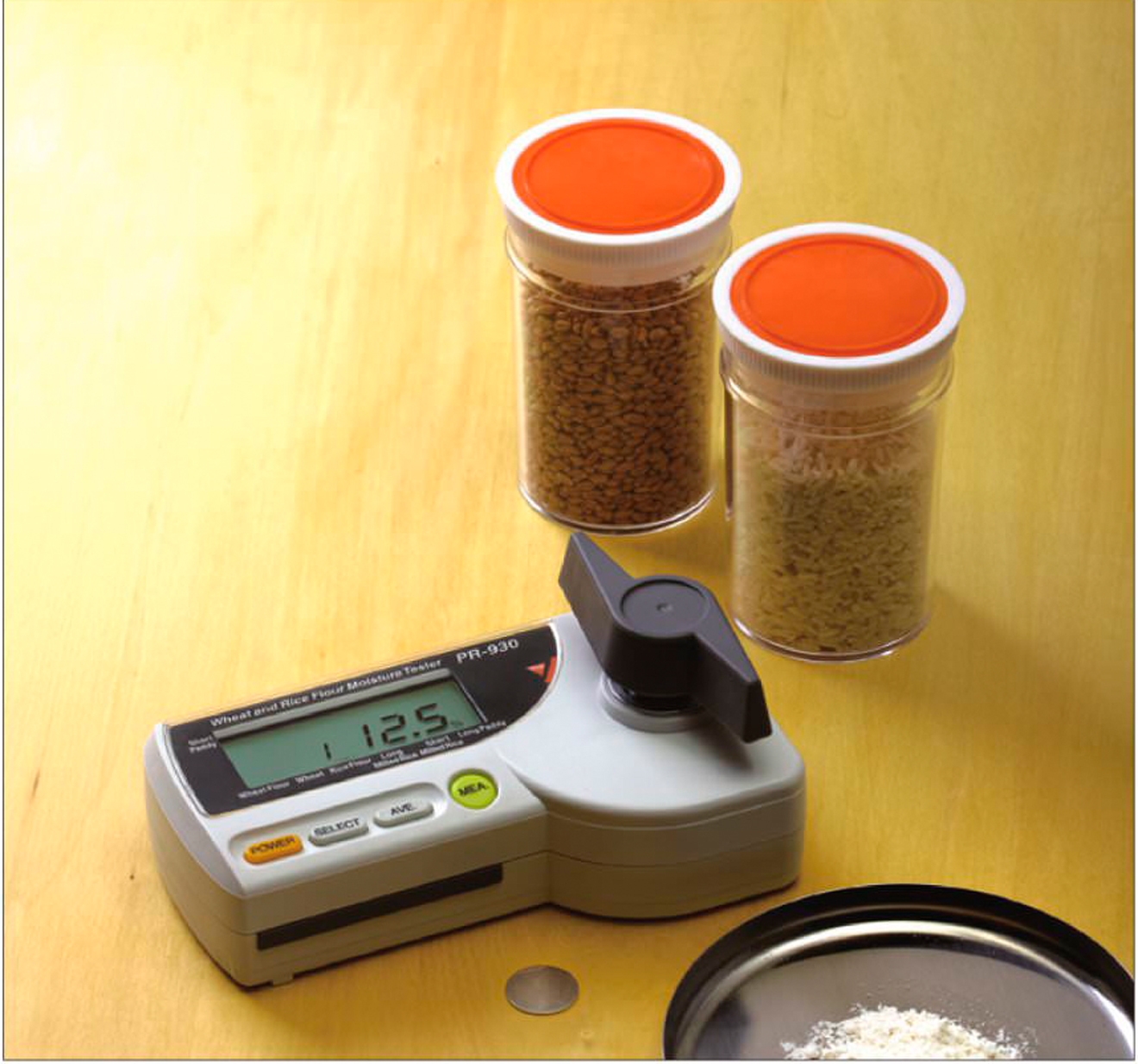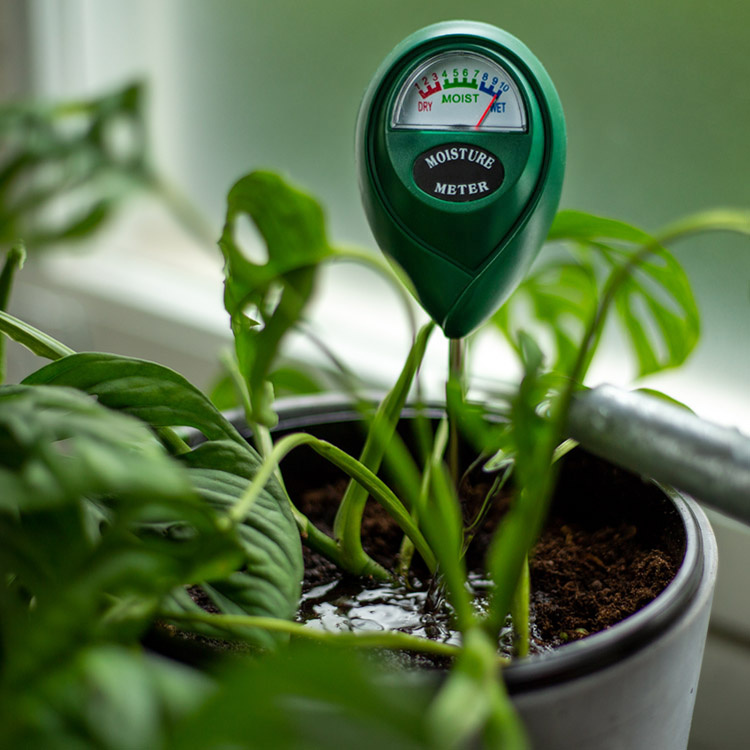Moisture Meter Reviews: Comparing the very best Designs for Expert and Do It Yourself Usage
Moisture Meter Reviews: Comparing the very best Designs for Expert and Do It Yourself Usage
Blog Article
Look Into the Globe of Moisture Meters: Whatever You Need to Know
In the realm of dampness meters exists a globe of accuracy and usefulness that often goes unnoticed. Understanding just how moisture meters operate, the different types readily available, and their diverse uses can lose light on their value in making certain quality and performance.
Exactly How Moisture Meters Work
Wetness meters operate by measuring the electrical conductivity or capacitance of materials to determine the dampness content present - Moisture Meter. These meters are very useful tools across different industries, including woodworking, agriculture, and building and construction. By using various approaches such as pin-type or pinless innovation, wetness meters supply exact analyses that aid experts make informed choices
Pin-type moisture meters function by placing the sharp pins right into the product being examined. The electric conductivity between the pins is then gauged, with greater wetness degrees resulting in raised conductivity. On the various other hand, pinless moisture meters use electro-magnetic signals to scan a larger location without creating any damages to the product's surface area. These meters are ideal for swiftly assessing moisture degrees in big areas or finished products.
No matter the technique used, moisture meters play an important role in stopping issues such as mold and mildew development, structural damage, or item flaws triggered by excess wetness. Understanding just how these meters work is vital for ensuring the high quality and honesty of products in numerous applications.
Kinds Of Moisture Meters
Given the vital function wetness meters play in numerous markets, it is necessary to comprehend the different types readily available to experts for accurately examining moisture degrees. There are mainly two primary sorts of moisture meters: pinless and pin-type moisture meters.
Pin-type wetness meters use 2 pins that are put into the product being checked to gauge the electrical resistance between them. This method is generally made use of for timber, drywall, and various other structure products. Pin-type meters supply specific analyses at specific midsts, making them optimal for recognizing moisture slopes.
On the other hand, pinless wetness meters make use of electro-magnetic sensing unit plates to scan a bigger location of the material without creating any kind of damage. This type appropriates for rapidly scanning large locations and is frequently used for floor covering, walls, and ceilings. Pinless meters are practical for taking readings on finished surface areas without leaving any visible marks.
Both kinds of moisture meters have their benefits and are chosen based upon the certain demands of the task handy. Comprehending the differences between these types is vital for professionals to make precise moisture assessments.
Applications Across Industries
With varied functionalities, wetness meters find widespread application across numerous sectors, aiding experts in guaranteeing ideal problems for products and frameworks. In the farming industry, dampness meters are indispensable for establishing the dampness material in grains, seeds, and hay, making sure top quality control and preventing mold and mildew growth. Building and construction professionals depend on moisture meters to assess the wetness degrees in structure products like drywall, wood, and concrete, which is critical for keeping structural integrity and stopping concerns like rot or mold and mildew. The flooring sector uses wetness meters to measure the moisture web content in subfloors before installing numerous flooring treatments, stopping costly damages due to excess moisture. In the food sector, moisture meters are made use of to keep an eye on and manage moisture degrees in items such as grains, nuts, and dried out website link fruits to preserve quality and top quality. In addition, dampness meters play a vital duty in the repair and damage control sector by assisting specialists recognize and deal with water damages in structures immediately. Throughout these read what he said diverse industries, wetness meters are essential devices for guaranteeing the high quality, security, and long life of different materials and items.
Tips for Utilizing Moisture Meters
Utilize the wetness meter's calibration settings to guarantee precise readings when determining the moisture content in various materials. In addition, make sure the meter is set to the proper moisture array for the product you are gauging to obtain the most specific outcomes.

When utilizing a pin-type dampness meter, place the pins to the appropriate deepness advised for the product being tested. This ensures that the moisture analyses are taken from the correct deepness within the product, giving an extra exact depiction of its dampness material. For pinless wetness meters, remember to maintain proper contact with the material's surface area to obtain trusted analyses.

Consistently examine and replace the batteries in your dampness meter to protect against incorrect analyses due to reduced power. When not in use to prolong its lifespan and maintain its precision, Shop the meter in a completely dry and risk-free location. By following these tips, you can optimize the performance of your moisture meter and get precise moisture material dimensions throughout different products.

Maintenance and Calibration
To make certain the precision of moisture material dimensions, regular upkeep and calibration of the dampness meter are essential actions in its proper performance. Calibration adjusts the dampness meter to make sure that it gives regular and trusted results.
Calibration needs to be carried out occasionally, particularly if the wetness meter is made use of regularly or in essential applications where precise dimensions are called for. By preserving and adjusting the dampness meter routinely, individuals can rely on the accuracy of the dampness material measurements obtained.
Final Thought
To conclude, moisture meters play a critical function in various markets by accurately measuring the moisture web content of products. Recognizing just how these devices work, the different kinds offered, and correct upkeep and calibration are important for getting reliable outcomes. Whether in farming, production, or building, making use of moisture meters helps make sure quality control and effectiveness in processes.
Building professionals count on moisture meters to examine the wetness levels in structure materials like drywall, concrete, and wood, which is important for keeping architectural honesty and preventing concerns like rot or mold and mildew. The floor covering market utilizes moisture meters to measure the moisture content in subfloors before mounting numerous flooring coverings, preventing expensive damages due to excess dampness.Make use of the moisture meter's calibration setups to make certain exact readings when determining the see wetness content in various products. By adhering to these pointers, you can optimize the efficiency of your wetness meter and obtain accurate wetness web content measurements across different materials.
In final thought, dampness meters play an essential role in various sectors by precisely gauging the wetness web content of materials.
Report this page